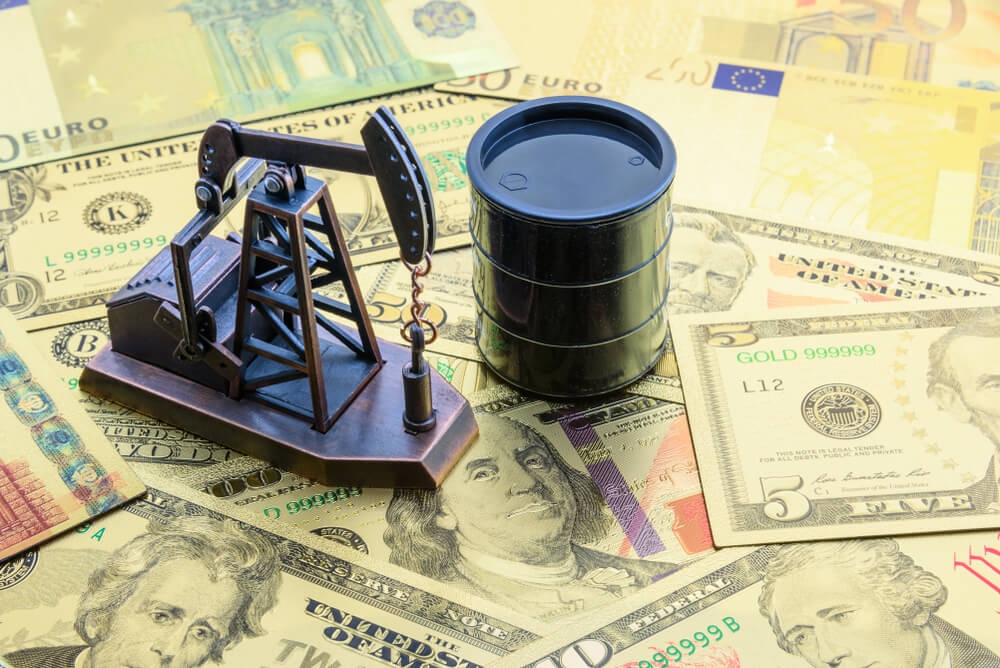
Oil prices have been severely hit by the coronavirus crisis this year. At the same time, the uncertainty regarding the medium and long-term outlook has significantly increased.
Article content
Factors influencing crude oil prices
These are the main factors that currently affect the dynamics of oil prices:
- US Consumer Data;
- COVID-19 vaccine and the pandemic itself;
- Increase in US drilling activity;
- Projected growth in OPEC+ crude oil production.
Let’s consider each of these factors separately.
US Consumer Data
Mixed data which showed the stability of American consumers resulted in increased positive sentiment across the market. Higher-than-expected retail sales data spurred investors to take risks, which in turn supported oil prices. If the US does not close its businesses for quarantine, the consumer demand may continue to increase in the pre-holiday and holiday season.
COVID-19 vaccine
Last week, Pfizer announced it might file for U.S. authorization of the coronavirus vaccine in late November. While the pharma giant hasn’t said anything new, this news was still encouraging as a number of other companies, such as Johnson & Johnson, that are also developing their vaccine, have paused their research.
Global spread of COVID-19 cases
An increase in confirmed coronavirus cases reduces the likelihood of recovery in crude oil demand. We should probably expect a downward revision of economic forecasts in the near future.
Increase in US drilling activity
The U.S. company Baker Hughes on Friday published data according to which the number of active drilling rigs in the United States has increased. This growth has been observed for four consecutive weeks.
The current dynamic shows that the volume of oil production in the United States, which now stands at 11 million barrels, isn’t likely to return to its pre-crisis level of more than 13.3 million barrels in the foreseeable future.
Projected growth in OPEC+ crude oil production
At the same time, OPEC + keeps talking about oil production growth since December 2020. Do not forget about Libya, which is rapidly increasing its oil output to meet demand when it first appears.

Forecasts, forecasts
So what do we have? The volumes of global oil production are rising, while the demand for raw materials remains extremely low, and, most likely, due to the unresolved coronavirus issue, it will remain low in the coming months. The benchmark, however, can receive support from the approaching winter season, when, based on historical data, the demand for raw materials increases. At the same time, one should not expect any significant growth in this indicator.
The strong US dollar is also a problem for oil, which is now in high demand as a safe-haven currency. Until the end of the year, the dynamics of the dollar may be driven by two factors: the adoption of a new stimulus package by the U.S. lawmakers and the 2020 United States presidential election.
Until Congress and the White House attempt to reach an agreement on the bailout, the dollar will remain in demand. Buying pressure on the currency may increase in the event of a smooth election and the subsequent conflict-free presidential transition.
We believe that in a world where there is still no vaccine against coronavirus, fears, and negative forecasts will hold back consumer demand for this asset. On the other hand, we shouldn’t probably be concerned about another collapse in crude oil prices like we witnessed in March. We believe that by the end of 2020 and the beginning of 2021, the benchmark will remain in the range of $35-40 per barrel.
Citibank predicts Brent crude oil prices to average around $ 55 per barrel in 2021. Until the end of the year, oil prices may surge up to $60. According to Ed Morse, global head of commodity research at CitiGroup, the prices will be rising as economies recover.
Goldman Sachs’ outlook is even more optimistic. Its analysts admit that the coronavirus vaccine will become available in the spring of 2021, which will play against quarantine and help raise demand for petroleum products and jet fuel, in particular in the airline industry. Thus, the price for Brent crude oil in the third quarter may rise to $60 a barrel. But at the end of the year, the prices may correct to the range of $58.
If we talk about short-term prospects, then we expect a decrease in the benchmark by the end of October.
The price keeps testing the $41.75- $42.00 resistance level for more than 30 days, which clearly indicates the lack of strength. Therefore we expect a moderate decline which will fizzle out as soon as the price breaks the $36 mark. Next, we’ll be waiting for the recovery to commence.
By the way, AMarkets offers excellent trading conditions both for beginners and experienced traders. Also, you can try the RAMM Copy Trading service and invest in traders’ strategies.
If you like our articles, follow us on Facebook and Instagram. Stay tuned for more interesting posts on our blog. We post new material several times a week.






